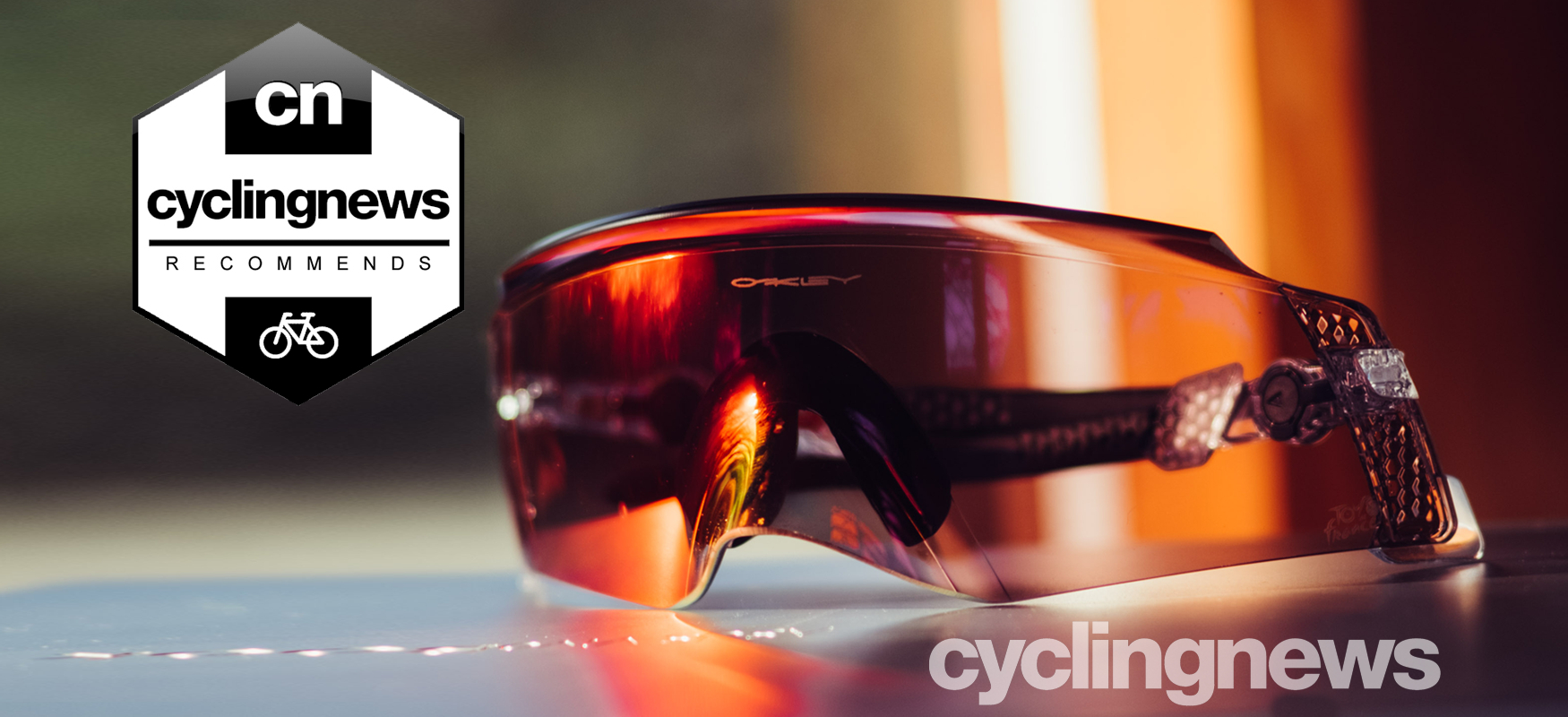Cyclingnews Verdict
Excellent optics, bold style, but a little breezy
Pros
- +
Excellent lens optics
- +
Secure fit
- +
Adjustable with multiple nose pieces
- +
Brilliant peripheral vision
Cons
- -
Sweaty nose
- -
Air gets behind the lens at speed
- -
Arms don't play well with helmets
You can trust Cyclingnews
Sunglasses are becoming ever-bolder in their designs in recent years. Long gone are the days of riders wearing diminutive two-lens options (unless your name starts with G and ends with -eraint Thomas). Shield-style glasses are de rigueur at the moment, thanks to both their ability to create a bold style statement, and the performance benefits of a bigger field of view and added shielding from the elements.
Although big shades have been around since the 80’s with the Oakley Eyeshades they fell out of favour until, in my view, Oakley released the Jawbreaker in collaboration with Mark Cavendish. Now Cav has again teamed up with Oakley to develop an even more visually striking pair of cycling glasses, with a unique lens that covers the nose.
As we know, however, style can only get you so far, so are these style over substance, or do they deserve a spot in our list of the best cycling sunglasses?
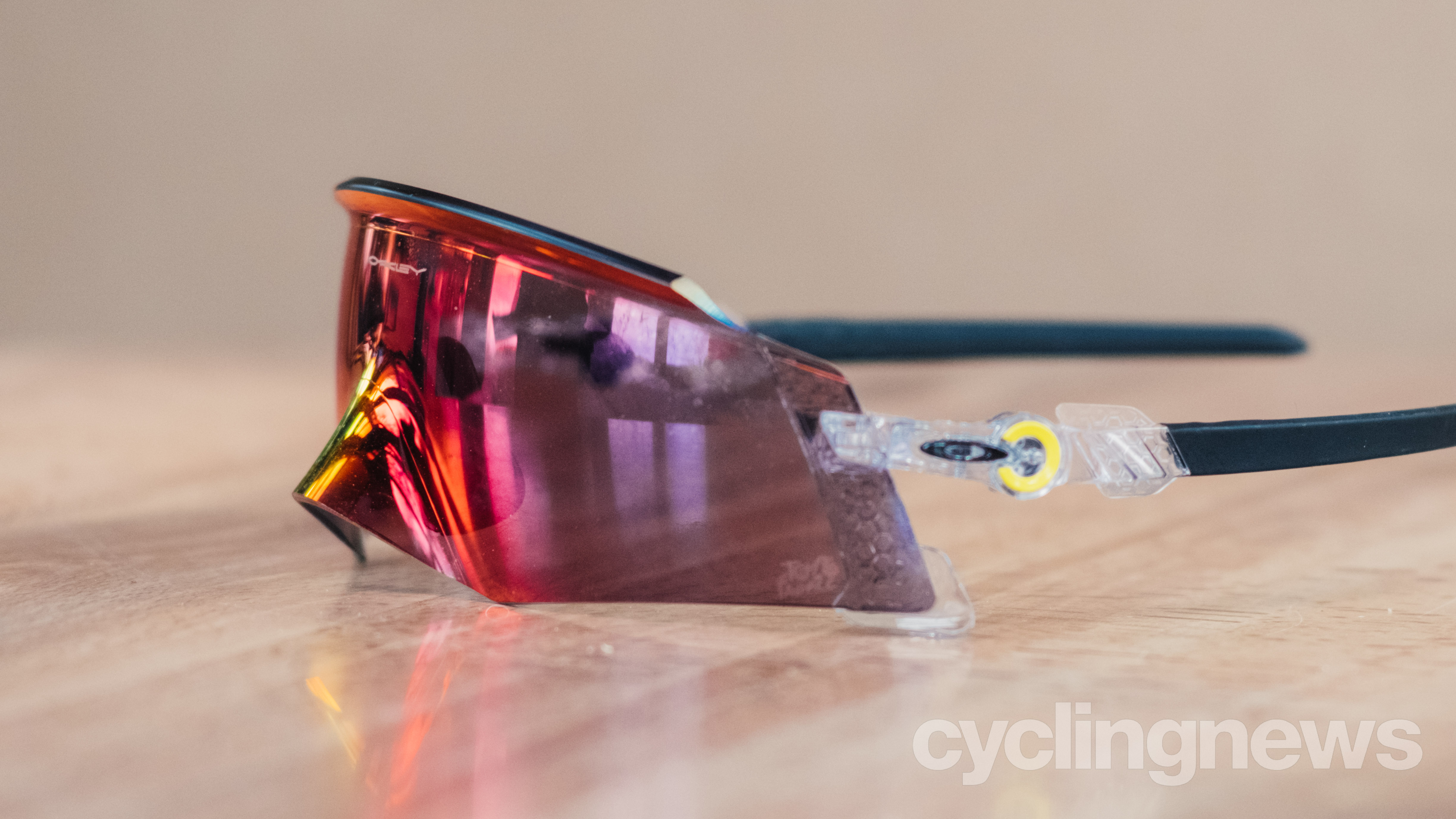
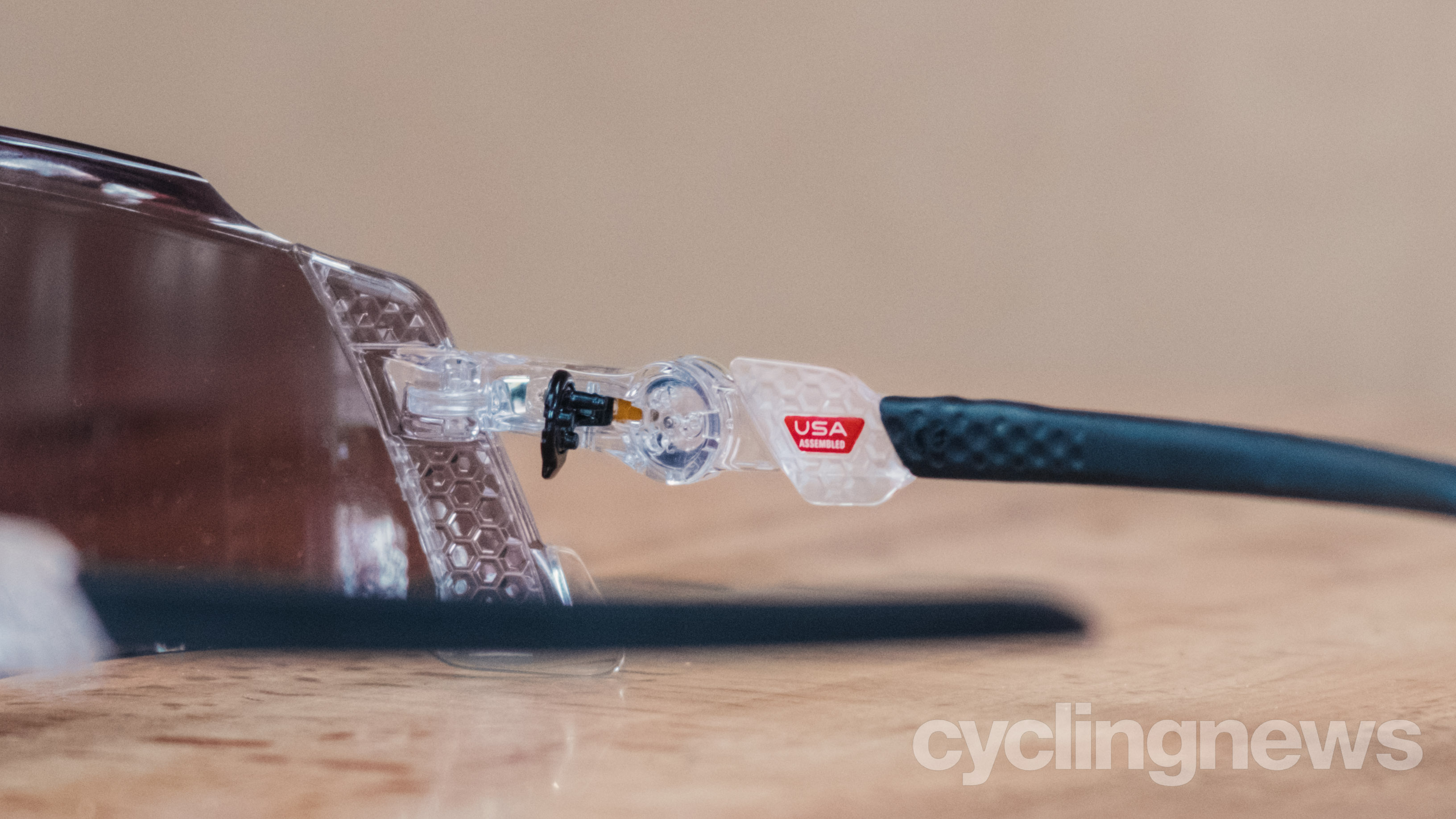
Design and aesthetics
“They’re a bit…Robocop!” The cafe owner said as I rolled in during my first test ride, and I am inclined to agree with him.
As statement glasses go, the Oakley Kato certainly has a bold look. The mirrored red monolens wraps far around the sides, and the continuation of the lens over the upper half of the nose adds a sci-fi aesthetic to proceedings, particularly as the extreme curves in this area lead to more drastic colour shift in the lens coating.
The arms, glassy clear in the Tour de France editions I had on test, are bonded to the outer edges of the lens, meaning swapping to a clear option (or any other lens) is impossible. The arms are flat over the ears and heavily curved inwards to hug the skull, as is the way with most performance offerings from Oakley, but the arms are noticeably more chunky than those of my Jawbreakers for example, with an all-round coating of Oakley’s ‘Unobtanium’ tacky rubber rather than just on the inside temple area. This same material is used on the three different nose pieces that are supplied, to ensure a proper fit.
The arms are adjustable in terms of angle, but not in length. Pop a socket at the hinge open and you can select one of three angle settings to allow the lens to sit properly. The combination of this angle adjustment and the different sizes of nosepiece are more vital here than in other sunglasses, as if they aren't properly adjusted (particularly if, like me, you are blessed with a strong nose) the nose of the lens can sit on your nose rather than the rubber pads, which is irritating.
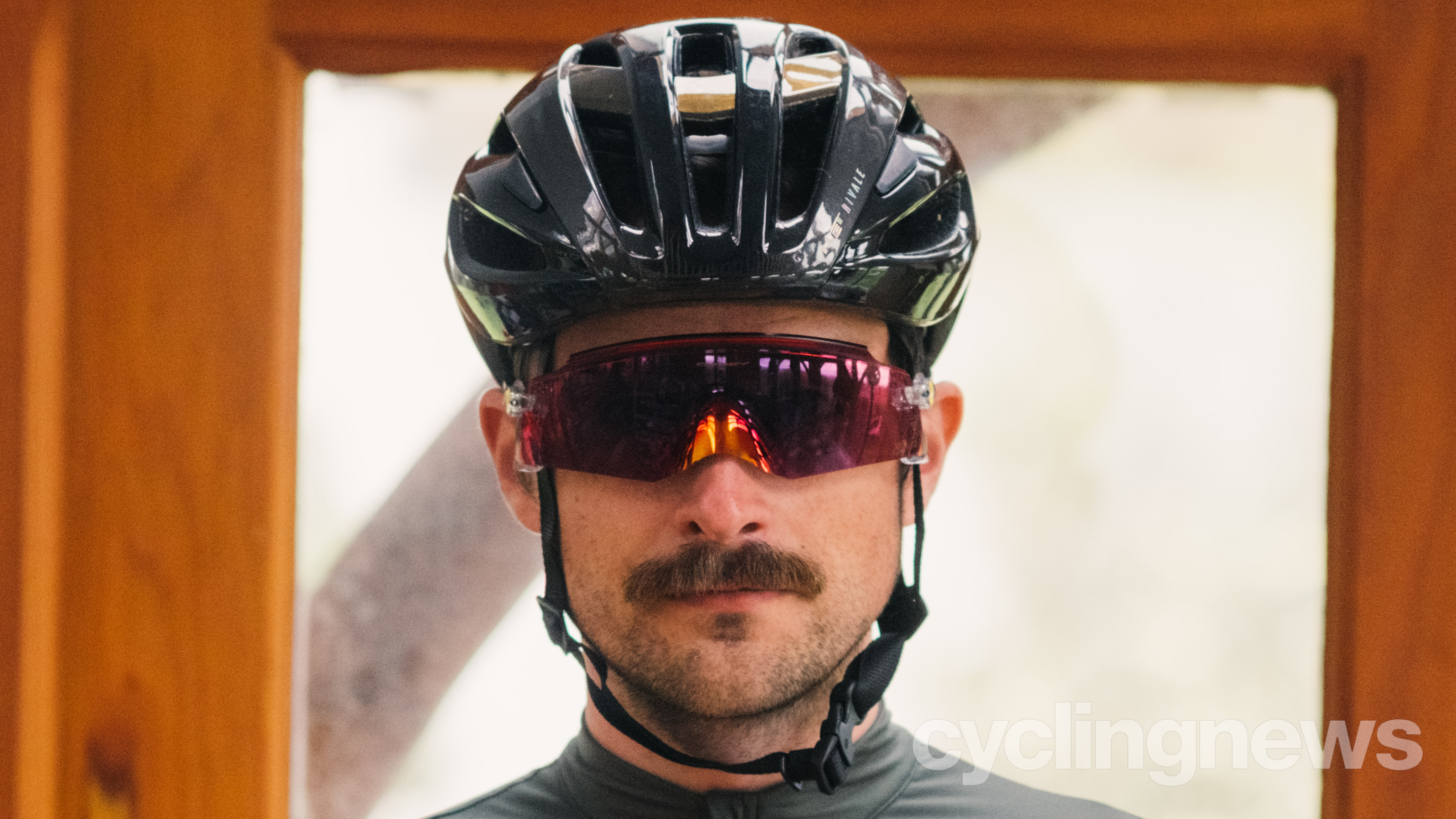
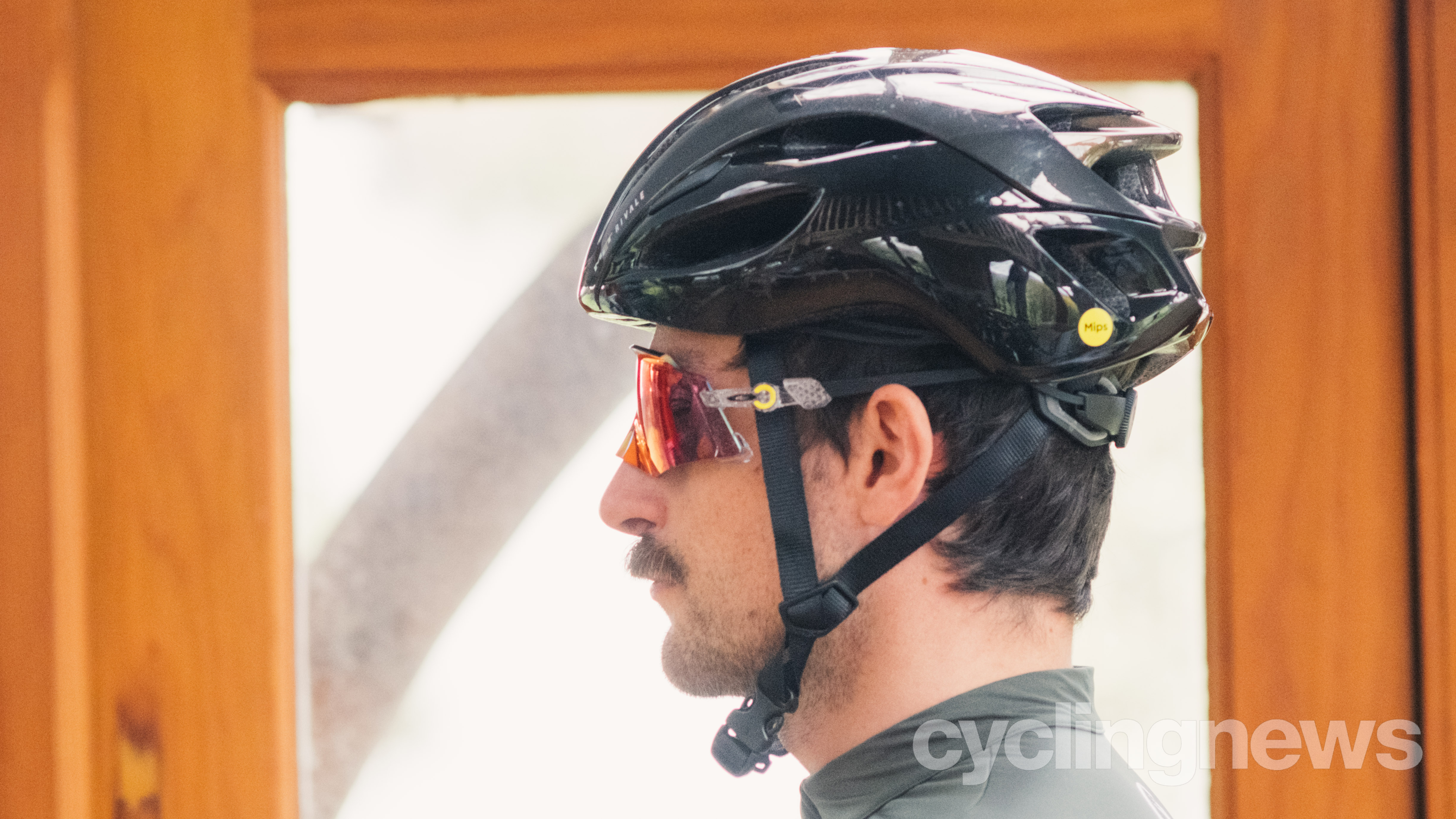
Performance
I’ve used Oakley’s Prizm Road lenses for a number of years in my own Jawbreakers before giving the Katos some testing. They are in my eyes (pun intended) the best all-round lens for riding in terms of clarity, and range of use. My first couple of rides were in bright sun, where they were plenty dark enough to cope with no squinting. What really struck me though is how well they cope with low light; even in heavily overcast days, or twilight urban riding, the lens provided an ample contrast boost and I could continue wearing them later into the day than I would with other lenses, such as my Prizm 24k (shiny gold) Oakley Sutros - It was similar to riding a pair of orange-tinted glasses but without the faff of having swap.
They aren’t quite as dark as the Prizm 24k set in my own pair of Sutros, but even essentially staring into the sun you don’t really need anything darker. Unless you live somewhere with perpetually blazing sunshine I’d take Prizm Road over Prizm 24k for the added contrast they offer in lower light.
As with every other pair of Oakleys I’ve used, the lenses are free from distortion, so pretty soon you don't realise there’s a bit of expensive plastic in front of your eyes. The only exception, in this case, is around the nose where the heavy curvature does warp things noticeably. It’s not an issue on the road, but occasionally disrupted the view to my cycling computer. Once I got them adjusted so the lens didn’t sit on my nose I found them free from fogging, though on hot days the nose covering did result in a novel feeling of a slightly sweaty nose.
The heavily wrapped shape of the lens meant they had the best peripheral view of any cycling glasses I’ve used to date, which came in particularly handy when looking behind. When you’re checking for an upcoming car/a chasing pack in a race (delete as appropriate) you are still looking through the lens, rather than through or behind the frame as is the case with flatter shaped options like the Sutro.
I have quite a small head, so finding glasses that don’t slide off my face is often a challenge. The chunky rubberised arms and wraparound shape meant these fit on a par with the best fit I’ve achieved to date from my very old pair of Oakley Radars. Having straight arms however means they can interfere with the cradle of helmets, especially for those with small heads. This was the case here, too, but was less of an issue with my Met helmet than with my old Kask option. The heavily rubberised arms keep them very much in place, though they struggle if you're wearing a cap; they’re designed to grip skin, not cotton.
The arms, slightly chunkier than other Oakley options, really struggled when it came to stowing them in my helmets (both a Met Rivale and a Giro Synthe). I think the heavy inward curve is as much the issue as the rubberisation - It’s not something the straighter arms of my Sutros or the thinner Jawbreaker ever suffered with.
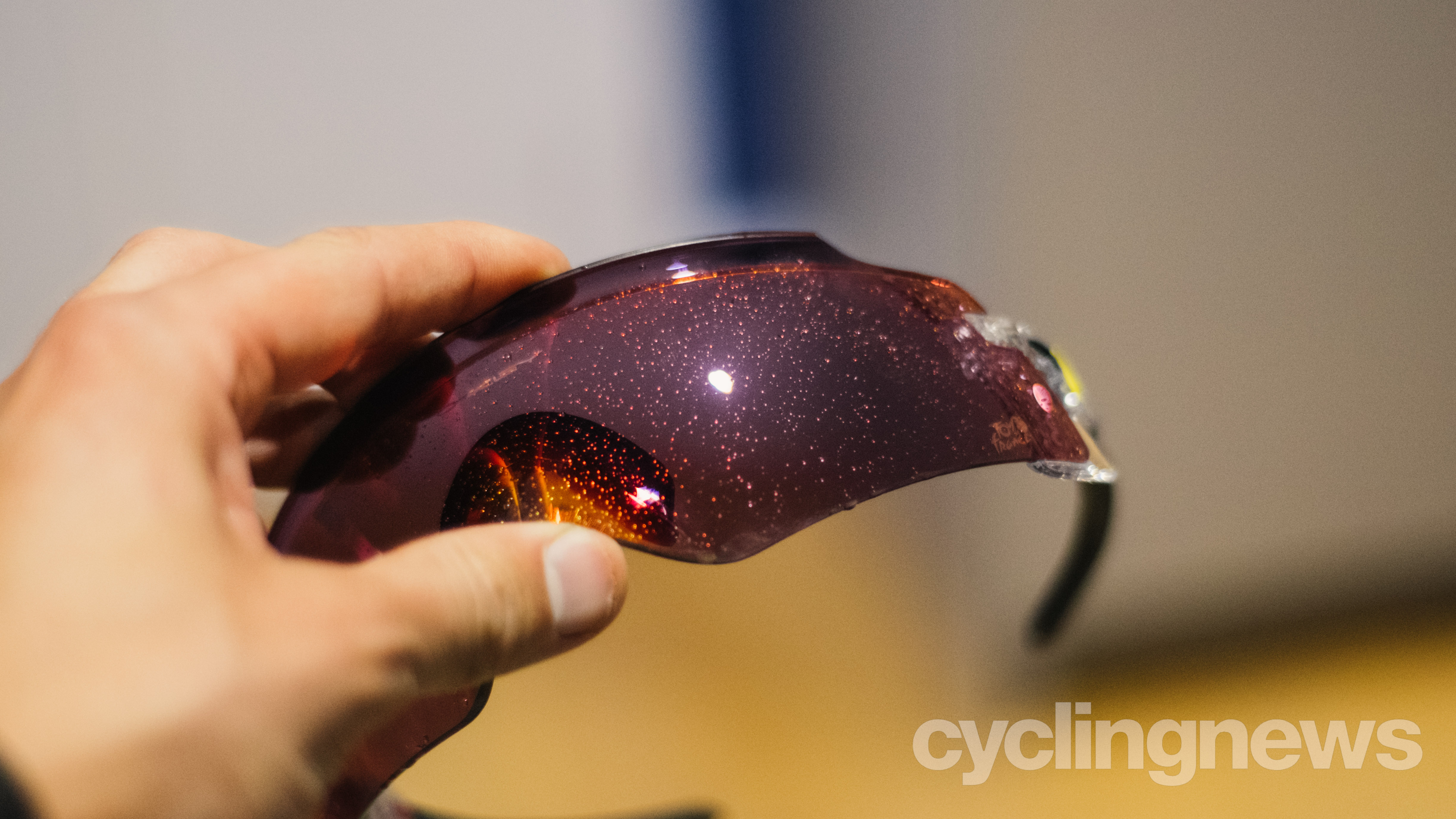
The lenses are technically brilliant, but I didn’t overly get on with the shape or how the Katos sat on my face. While riding the lenses feel a lot shallower than something like a Sutro. I often found myself looking at the lower edge of the lens, wishing it was a touch taller, especially at the bottom edge. The upper height was ample, even in extreme aero positions, and even though the presence of a curved ridge on the upper portion of the lens effectively reduces the height by 5mm or so. The official purpose of this ridge eluded me, but I found it useful when adjusting the position or holding the glasses by the lens to avoid any sticky fingerprints.
While the height of the lens was a slight annoyance, but something I could look past, the biggest drawback I found with the Oakley Kato was just how breezy they were. The lenses aren't vented, and to avoid fogging I believe Oakley has designed them to sit further away from the face, in much the same way as the adjustable Flight Jacket in the outward position. This had the effect of drawing air in and behind the lenses at high speed, and resulted in my eyes watering on fast descents - very much not what you want at 70km/h down a single lane country road. It’s not a scientific metric by any stretch, but I was also significantly snottier during general riding while wearing the Katos, and it’s down to the added air circulation making my eyes water a little. This may not be an issue for those with bigger heads, but it was very much an issue for me. On the flip side, fogging was never an issue, even when stopping on colder rides which is when I usually face such issues.
I couldn’t find anything in the specs to confirm or deny whether the lenses are hydrophobic or oil-resistant, but in the rainwater did bead into lots of smaller drops rather than wetting the lens out entirely. The effect was marginal, however, and I can’t in all honesty say they’re better or worse than the competition in this regard.
Verdict
The Oakley Kato is certainly an eye-catching option, and very much in vogue at present. The lenses provide some of the best clarity out there, and while I have only tested these in the short term, the coating on my own pair of Jawbreakers took a good few years of filthy riding before it began to deteriorate so I’d be confident in saying these will be hard-wearing too. The peripheral vision is second to none, and the shade of the lens means they can be used in anything from bright sunlight down to overcast and near-night conditions without any issue.
Thanks to the nose-wrap of the lens the fit was a little more involved than other glasses, but once sorted they fit well enough, were extremely secure, but did not play nicely with any of my helmets for stowage.
For most people, particularly those who want to stand out, I think they’d be an excellent pair of glasses, but for those like me with a small head I think they allow too much air behind for an enjoyable experience.
At £241 they aren't cheap, especially given you cannot swap the lenses, but aren't the absolute most expensive option out there. They’re certainly more expensive than glasses I’ve had a better time with though, which is the key point. They’re available in seven lens options, but unless you want a colour to match your kit, go with the Prizm Road option.

Will joined the Cyclingnews team as a reviews writer in 2022, having previously written for Cyclist, BikeRadar and Advntr. He’s tried his hand at most cycling disciplines, from the standard mix of road, gravel, and mountain bike, to the more unusual like bike polo and tracklocross. He’s made his own bike frames, covered tech news from the biggest races on the planet, and published countless premium galleries thanks to his excellent photographic eye. Also, given he doesn’t ever ride indoors he’s become a real expert on foul-weather riding gear. His collection of bikes is a real smorgasbord, with everything from vintage-style steel tourers through to superlight flat bar hill climb machines.
